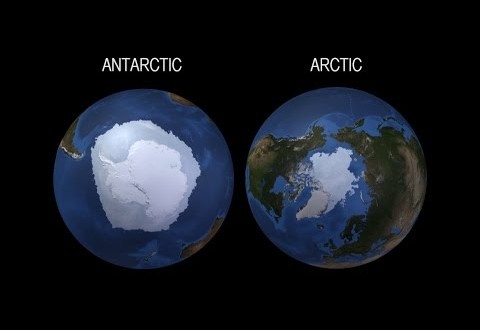The sea ice surrounding Antarctica has just reached a new record high this year. The ice covers more of the southern oceans than it has since scientists first began a long-term satellite record to map sea ice extent in the late 1970s.
In a press release, NASA researchers have said that although it is seen that the Earth is warming and that changes in sea ice levels are a microcosmic representation of climate change. But despite sea ice depleting as Earth’s temperature rises, the Antarctic has not followed this downward trend and is actually colder than average.
“The planet as a whole is doing what was expected in terms of warming”, said NASA’s Goddard Space Flight Centre senior scientist Claire Parkinson. “Sea ice as a whole is decreasing as expected, but just like with global warming, not every location with sea ice will have a downward trend in ice extent”.
According to the National Snow and Ice Data Centre, the Antarctic has gained an average of 7,300 square miles (18,900 sq km) of ice each year and for the first time ever since 1979, exceeded 7.72 million square miles (20 million sq km) on September 19th this year. But sea ice reached a record high in September 20th, peaking at 7.78 million square miles – the highest single-day maximum that had ever been recorded.
However record lows have been recorded in the Arctic which has been losing an average of 20,800 square miles of ice each year due to global warming and left poor polar bears desperate clinging to remaining frozen blocks as water continues to surround them.
The main difference in the melting rate of ice caps seems to lie on the weather conditions in the region. Washington Post reports that scientists are trying to find the explanation for why ice levels are increasing in the Antarctic, however vastly shrinking in the Arctic on the other side of the world. One possible explanation could be that ice is melting in the Antarctic, however the fresh water is the flushed into the ocean and freezes over.
Another is that cold air and winds breeze over the Antarctic sea, causing the formation of sea ice. Goddard research scientist Walt Meier explains, “The winds play a really big role. They whip around the continent, constantly pushing thin ice. And if they change direction or get stronger, they push the ice further and grow the extent”.
Yet more research needs to be done for scientists to truly understand the observations. Despite the findings seemingly proving that the ice caps haven’t been decreasing, scientists have stressed that this doesn’t mean global warming isn’t a harsh reality.
“Some people have looked at the Antarctic increasing trend and use that to suggest that global warming isn’t happening… and that’s simply not true. The arctic is increasing about twice as fast as the Antarctic is. The increase we’ve seen in the Antarctic extent is a little bit of a mystery”, said Meier.
Although the observations are baffling, they will prompt further research into the difference between the north and south poles to continue determine the effects of climate change.
“They‘re kind of the canary in a coal mine [detects risks to humans, for example, canaries were historically used to detect gas in coal mines] for global warming”.
“Studying those gives us an indication of what we’re going to see around the rest of the globe in the future”.
Agencies/Canadajournal
 Canada Journal – News of the World Articles and videos to bring you the biggest Canadian news stories from across the country every day
Canada Journal – News of the World Articles and videos to bring you the biggest Canadian news stories from across the country every day



